Picture a scenario where you're trying to generate an accurate forecast for your CFO, CEO, and board. Imagine coordinating across multiple divisions, utilizing countless spreadsheets, and investing hundreds of hours from your senior team members. The process is exhausting, frustrating, and ineffective. This situation is unfortunately all too common, and we need to address it.
And unfortunately, once all that time is spent generating a forecast that only looks back, it is no longer a forecast; it’s a “backcast.” It’s truly dead on arrival.
The True Costs
When considering the costs to generate a forecast that is dead on arrival, it gets worse.
Let's consider an average organization with ten divisions. If each division requires 100 hours per month to generate a forecast, at an average rate of $80 per hour, that's a whopping $960,000 spent annually.
And what's the outcome of this massive annual investment? You're left with forecasts that are dead on arrival, missed quotas, unhappy board members, a lack of confidence in leadership, and reduced company valuation.
Missed Quotas & Unhappy Board Members
But there's a solution to this challenging problem. The key is to make data the heart of your revenue center of excellence. The journey to this state of revenue enlightenment may seem daunting, but it's achievable with the right framework. Defining Forecasting
Before the power of data could be harnessed, forecasting was defined as a method of making informed predictions by using historical data to determine future trends.
With the ability to harness data, train machine learning models, and use AI to forecast upcoming events, forecasting now involves a combination of historical data and real-time changes and trends. Salesperson behavior, customer service behavior, pipeline traction, post-sale engagement, customer behavior, product performance, finance data, and macroeconomic trends all play a crucial role in making accurate predictions. By integrating these factors, forecasting becomes a robust and reliable tool. It not only predicts future outcomes but also uncovers root causes and provides prescriptive insights to address them effectively.
This approach minimizes risk and empowers data-driven decisions to grow more substantially . It enhances the quality and efficacy of the forecasting process and has a direct impact on the top line.
Say Hello to Predictive Forecasting.
Why Predictive Forecasting is Critical to Your Growth
The world has changed. Customer behaviors have changed. Employee behaviors have changed. What you sell has changed or will be changing. What worked a few months ago is no longer working today. We also have two years of complete abnormality. Using Same Time Last Year and historical data is simply not viable and is getting revenue organizations into trouble.
And frankly, when faced with uncertain economic conditions, not having an accurate forward-looking view into your revenue future could be a mistake hard to overcome.
Predictive forecasting impacts the board, the CEO, CRO, COO, CRO, CMO, and functional heads. It affects revenue teams and individual sellers. It’s critical that predictive forecasting is put at the top of the strategy agenda.
Where to Start
My first piece of advice is to understand two things:
- Your current data strategy, architecture, and process
- Your current state of “revenue excellence” or lack thereof
Once that is established, knowing where to start is easy, and we have developed a framework to help you along the journey.
The Revenue Room™ Framework
The Revenue Room™ Framework serves as the guiding North Star that encompasses predictive forecasting and simplifies the transition from outdated, ineffective forecasting practices to highly effective predictive forecasting. The four phases of the journey include standardizing and governing revenue functions, reviewing and consolidating data and platforms, and, ultimately, modernizing products. Let's break it down: Phase One: Standardization & Governance
The first step is to standardize processes and develop governance across your revenue functions. This involves streamlining your sales processes, standardizing your pipeline stages, and establishing common terminology across divisions. You'll also need to ensure that everyone is using the same CRM and sales tech stack and that you're all measuring success using the same KPIs.
Phase Two: Data & Platforms
Next, you need to review your systems and the data flowing through them. This involves strategizing and governing data, managing and analyzing it, and improving data visualization and reporting. It's crucial to consolidate your data platforms, democratize access to them, and improve your team's data literacy and skills.
Phase Three: Revenue as a Center of Excellence
Now, with standards, governance, and a data and platform strategy in place, you're ready to activate data analytics to drive revenue excellence. This means aligning your organization, establishing revenue operations, implementing measurements and insights, and identifying risks and opportunities.. It also means your revenue teams can use leading indicators to improve quota performance, identify deal risk and, immediately activate “deal storming” activities, get alerts to as well as customer expansion opportunities. Revenue-critical teams can collaborate, making winning a team sport.
Phase Four: Product Modernization
Finally, as your revenue organization gains momentum and your understanding of customer demands increases, your product team can collaborate with your revenue, marketing, and operations teams to improve product performance and innovate around data. Products can be standardized so data and reporting is meaningful and accessible with a push of a button, unprofitable or loss leaders can be managed or discontinued, and new solutions with high margins and customer value can be optimized.
The Benefits of Predictive and Prescriptive Forecasting
Putting data at the center of your revenue universe allows you to generate predictive and prescriptive forecasts. This approach allows you to avoid 'Category 5' disasters, make your customers, CEOs, CFOs, board members, and investors happier, and increase your company's valuation.
The most significant benefit, however, is the cultural shift that occurs within your organization. You'll notice an increase in data literacy, shared accountability, and decision-making backed by data rather than gut instincts. As a result, your business becomes more customer-centric.
So, what's your take on predictive and prescriptive forecasting and making revenue a center of excellence? Are you ready to implement the recommended framework and steps to get there? Email me with your thoughts. About the Author
Heather Holst-Knudsen is a distinguished figure and expert in the events, media, marketing and technology sectors. Using her extensive experience, she guides clients in adapting to structural economic and market changes, seizing the chance to innovate and evolve. She specializes in digital and data disruption and opportunity, exploring how these overarching factors can impact revenue growth, customer-centricity, operational efficiency, profit margins, and the overall valuation of companies in both public and private markets.
Her journey began at her family business, Thomas Publishing Company, where she honed her skills. She further expanded her expertise by holding positions at early industry giants Miller Freeman, Reed Elsevier, and IDG. Returning to Thomas Publishing, Heather founded and spearheaded Manufacturing Enterprise Communications, an integrated media portfolio connecting buyers and sellers in the manufacturing and technology sectors. Starting in 2015 and spanning the next seven years, she leveraged her expertise as a revenue and business leader in various SaaS businesses, including Feathr, Gleanin, Brella and Edflex.
Heather is deeply passionate about digital innovation, data monetization, and AI and how these strategies fuel revenue growth, profitability, and company valuation. To serve and create value for clients in these areas, she launched H2K Labs, dedicated to generating and leveraging value through data for media, business information, events, and adjacent technology and service markets. 





